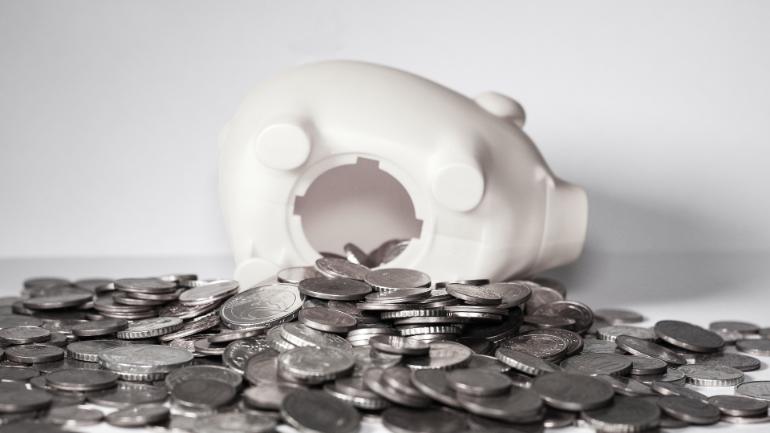

Fmployees working in a corporate setup or registered employees in an organisation are entitled to Provident Fund (PF), a popular pension scheme for each and every employee working in an organisation having over 20 members.
Once a member’s PF is registered, the contributions in the fund keep swelling as they continue to work in one organisation or more. In case individuals change jobs, the PF contributions have to be transferred from the previous company to the present organisation.
Many people have inquired on how to withdraw money from PF, in view of the recent changes that were mandated. Here are all the possibilities where a withdrawal request can be forwarded:
How to withdraw money from PF:
A judgement last year by Income-Tax Appellate Tribunal (ITAT) has made it mandatory for exiting employees to either transfer their PF balance or withdraw the amount to avoid being taxed on final PF amount.
For instance, the interest earned on PF balance will be tax free till an employee exits the company; the interest earned on the balance following the exit will not be tax-free. In a nutshell, you should withdraw PF or transfer it during the out-of-job period to avoid being taxed on withdrawal of PF.
READ: ESIC payroll data suggest 1.6 cr new jobs created in 13 months till Sep: CSO report
Procedure
Members who want to opt for a PF withdrawal can either submit a physical application or an online application to the retirement body. You can download the composite claim form–both Aadhaar and non-Aadhaar–using this link.
Individuals can move ahead with an online submission if they have an activated UAN number and their present mobile number is linked to it. It may be noted that UAN is linked with a member’s KYC details including Aadhaar, PAN card, bank details and IFSC. In the online process, there is no requirement of attestation of previous employer to move ahead with the withdrawal process.
Step 1: First you have to go to the UAN portal using this link you will see the option on the top right-hand corner. Enter the UAN number, password and the captcha to login.
Step 2: After logging in, you should check whether your KYC details such as Aadhaar, PAN card, bank details are verified or not.
Step 3: If the details are verified, click on the online services’ tab and then select the claim option from the drop-down menu. The next page will show you the claim section, where you need to select the proceed for online claim’ option.
Step 4: On the form, you have to select whether you want to go for a full withdrawal or partial withdrawal from the I want to apply for’ tab. In case a member is not eligible for withdrawal of funds, the option will not be shown in the drop-down menu.
It will take maximum 20 days for an individual to receive his PF claim. If it is a partial claim made through employer, the employer may take 7-10 days in attesting the claim and forwarding it to the EPFO.
Complete withdrawal:
Members should note that they can completely withdraw their EPF fund after retiring from employment at the age of 58 years or in a situation where an individual stays unemployed 2 months.
**Tip: A recent ruling by the retirement fund body, however, has given the option to employees to withdraw 75 per cent of the total funds after a month of unemployment. In addition, members also have the option to withdraw the remaining 25 per cent of the fund by applying for final settlement after two months.
In case of unemployment over 2 months, a member has to get it certified by a gazetted officer and submit the same to the retirement body for withdrawal. However, it is illegal for employees to opt for complete withdrawal in a situation where they have not been out of job for two months.
Partial withdrawal:
A member can also make partial withdrawals from his/her PF after being employed for 5-7 years at least. These are withdrawals that can be made under special circumstances:
Marriage
Members can withdraw 50 per cent of employee’s share of contribution to the EPF for this purpose after seven years of employment. This only applies to marriage of self, children, brother and sister.
Education
Members can withdraw up to 50 per cent of employee’s share of contribution to EPF after seven years of employment. This applies to self-education or the education of son or daughter after class 10.
Real estate purchases
Withdrawals from EPF will also be applicable to land purchases; you are entitled to withdraw up to 24 times of your monthly wages along with dearness allowance (DA). In case you are withdrawing PF for construction of house, the entitlement amount goes up to 36 times your monthly wage along with DA. Members should note that withdrawal for such purposes will be allowed after five years of employment.
Replaying home loans/renovation
You can withdraw up to 90 per cent of the total employee and employer contribution in the EPF. To validate the withdrawal, the property should be registered in the name of the employee, spouse or a joint-family setup. Relevant documents mandated by the EPFO will also have to be produced (pending loan, housing documents). The total PF amount including interest has to be greater than Rs 20,000. Members can make such a withdrawal after 10 years.
You can also withdraw up to 12 times of your monthly wage from PF during the renovation of your house. In this case, too, the house should be registered under the name of the employee or spouse or joint-family
[“source=gsmarena”]




